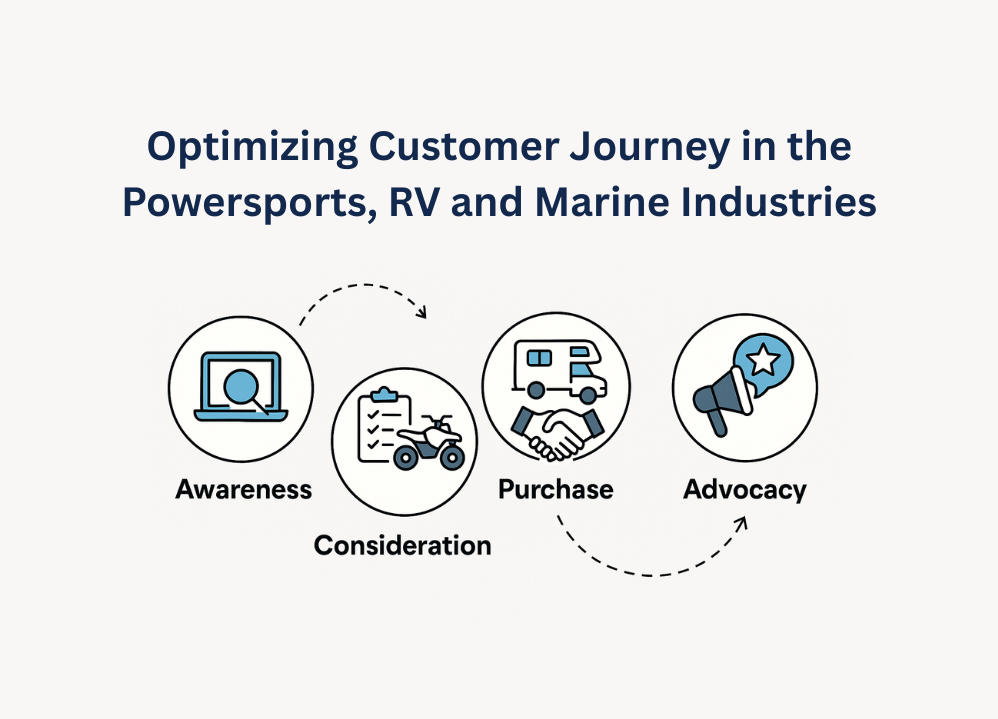Introduction
If you have been thinking about implementing a lead management system, there are probably some questions you have been mulling over. A lead management system is an investment and you want to make sure the benefits outweigh the cost. In this article, we will go over what a lead management system is and how it differs from a marketing automation solution. We will also cover a checklist of questions to answer before you pull the trigger on a lead management system.
What is the Difference Between Lead Management and Marketing Automation?
To simplify things, a lead management system will collect leads from form submissions on your website, pull them all into one place, and alert the correct dealer and OEM sales reps via email, text, or a mobile app with the lead’s area of interest (e.g. brochure request, quote request, appointment request, etc). Taking it a step further, a marketing automation system will take the leads, segment them, score them, and provide web session activity. It will also automate a series of email communications on behalf of the OEM and dealer, which are designed to nurture the prospect to a sale.
For most of us operating in the OEM world, lead management and marketing automation tools go hand-in-hand and can move the needle from a sales and marketing operations standpoint. Both solutions can be phenomenal tools for simplifying your sales and marketing tactics, but for a two-tier distribution business, a lead management system can make a huge difference in understanding your dealer network’s sales performance.
What is the Benefit of a Lead Management System?
In a two-tier distribution business model, the OEM makes the product and then local dealers sell the OEM’s product for them. The problem in the recreation and industrial equipment industries is that dealers (typically) sell many different OEM products simultaneously. This means it is important for the OEM to have visibility into the leads they are sending to their dealers, so they can fight to win business over their competitors and ensure the leads they are providing don’t get switched off to a competitive brand at the local level. With a lead management system, like Aimbase, you can track leads as they are submitted and see how the dealer is responding and communicating with the lead (e.g. did the dealer receive the lead and did they respond with a quote?).
In addition to compiling every detail about each lead in one place, a lead management system will tell you which dealer received the lead and which OEM rep was copied on the lead. It should also share metrics around lead delivery date/time and when the lead notification was opened and engaged with by the dealer. This allows the OEM to follow along with each lead to ensure they are getting the attention they need and within an acceptable time frame.
Lead Management Improves Customer Experience, Too
You are probably already investing a decent amount of time, money, and energy into lead generation, but if you don’t have a lead management platform in place, you are likely manually sending leads to dealers with no visibility into how they are being managed locally. With leads in the pipeline and in the dealer’s hands, a lead management system will help move leads down the funnel and improve the consumer experience along the way. Why? A few reasons:
- Quicker response times from your dealers and sales reps
- More personalized prospect follow-ups
- Questions are answered quickly and in the medium most comfortable for the customer (email, text, phone)
- Dealers are able to focus their time on customer experience instead of lead management or whether or not the lead made it into their CRM (Aimbase takes care of it)
Ok, This Sounds Great – How Do I Get a Lead Management System?
If you are asking yourself this question after reading about all the benefits of implementing a lead management system, then you are in the right place. Here is a checklist of what you need to think about:
- What will bring me the most ROI, a lead management system or a more robust marketing automation system? Or Both?
- Do I sell through a two-tier distribution business model and are there solutions that support this model? Hint, hint, Aimbase.
- Do I already spend dollars and time on lead generation and optimizing my website to capture prospects? If not, why not?
- Do I want the ability to see where leads come from and where go after they leave my site (e.g. the dealer’s site)?
- Do I want better communication with my prospective customers?
All these questions will help you determine if your business is ready and a good fit for a lead management system. If you answered Yes to most of the questions, feel free to reach out to us about the next steps.
What Comes After Implementing a Lead Management System?
The marketing efforts do not end once you implement a lead management system. This solution will make your life a lot easier and give you some fantastic benefits you didn’t have before, like visibility into leads, sending leads to the correct dealer, quicker response rates and an overall simplification of the lead generation process. However, a lead management solution won’t do ALL the heavy lifting for you. You still need to actively engage and respond to leads, answer their questions and make them feel heard. Especially, if the dealer isn’t responding to the prospect.
To help with this part of the process, you can implement an OEM concierge call center program. This is a team of brand experts who are tasked with calling each lead individually to follow-up with them, gather additional information, answer any of their questions, and to set appointments with dealers. An OEM concierge team will call each lead a total of 3 times over a 24 hours period (assuming the lead doesn’t answer on call 1 or 2).
Even if you don’t want to implement a concierge service for your brand, you still need to have an internal team or a Factory Rep that is dedicated to performing these duties. Case Study: Leveraging Rollick’s Concierge team, following up with leads and setting dealer appointments led to a 2.2% increase in closed sales for one marine OEM, which translated into an 18% increase in units sold. And this was in the first 6 months.
Beef it Up with Marketing Automation
If your lead management system is working well for your brand, you might also consider bolting on a marketing automation solution. This will enhance your lead management program and add benefits like automated nurture emails, enhanced customer segmentation, and predictive analytics on products and services your prospects are likely to purchase.
Conclusion
Lead management is a core business solution that every OEM should consider investing in, especially if one of your goals is to generate leads for your brand and dealer network. A lead management system will ensure that the time, effort, and money you are spending on lead generation doesn’t go to waste and it will ultimately increase your engagement with your dealer network. Couple that with a marketing automation solution and you’ll have everything you need to improve sales and marketshare.To learn more about Aimbase and how it can help boost your sales and customer experience, contact us today.




